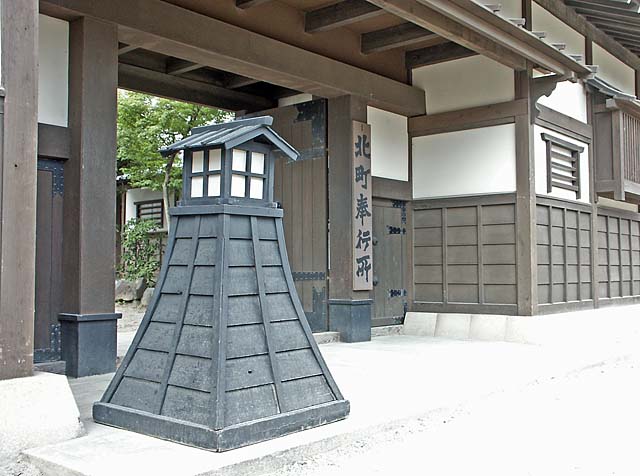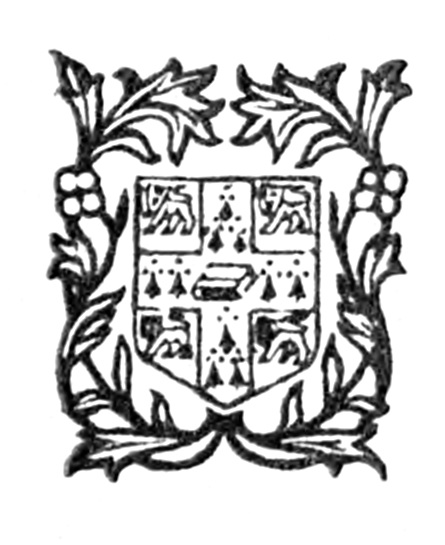|
Metsuke
were the censors or the inspectors of Tokugawa shogunate. They were ''bakufu'' officials ranking somewhat lower than the ''bugyō.'' The ''metsuke'' were charged with the special duty of detecting and investigating instances of maladministration, corruption or disaffection anywhere in Japan, and particularly amongst the populace having status below the ''daimyō''.Beasley, William G. (1955). ''Select Documents on Japanese Foreign Policy, 1853–1868'', p. 326. Intelligence gathering The shogunate recognized the need for some kind of internal intelligence-gathering apparatus and for some degree of covert espionage within its own ranks. It could be said that the ''metsuke'' functioned as the Shogun's intelligence agency or as internal spies, reporting to the officials in Edo on events and situations across the country.Cunningham, Don. (2004) ''Taiho-jutsu: Law and Order in the Age of the Samurai,'' p. 39./ref> The ''metsuke'' were charged with focusing on those ranking below ''dai ... [...More Info...] [...Related Items...] OR: [Wikipedia] [Google] [Baidu] |
|
|
Rōjū
The , usually translated as ''Elder'', was one of the highest-ranking government posts under the Tokugawa shogunate of Edo period Japan. The term refers either to individual Elders, or to the Council of Elders as a whole; under the first two '' shōguns'', there were only two ''Rōjū''. The number was then increased to five, and later reduced to four. The ''Rōjū'' were appointed from the ranks of the '' fudai daimyōs'' with domains of between 25,000 and 50,000 ''koku''. Duties The ''Rōjū'' had a number of responsibilities, most clearly delineated in the 1634 ordinance that reorganized the government and created a number of new posts: :#Relations with the Emperor, the Court, and the Prince-Abbots. :#Supervision of those '' daimyō'' who controlled lands worth at least 10,000 ''koku''. :#Managing the forms taken by official documents in official communications. :#Supervision of the internal affairs of the Shogun's domains. :#Coinage, public works, and enfiefment. :#Government ... [...More Info...] [...Related Items...] OR: [Wikipedia] [Google] [Baidu] |
|
 |
Censors
Censorship is the suppression of speech, public communication, or other information. This may be done on the basis that such material is considered objectionable, harmful, sensitive, or "inconvenient". Censorship can be conducted by governments, private institutions and other controlling bodies. Governments and private organizations may engage in censorship. Other groups or institutions may propose and petition for censorship.https://www.aclu.org/other/what-censorship "What Is Censorship", ACLU When an individual such as an author or other creator engages in censorship of his or her own works or speech, it is referred to as ''self-censorship''. General censorship occurs in a variety of different media, including speech, books, music, films, and other arts, the press, radio, television, and the Internet for a variety of claimed reasons including national security, to control obscenity, pornography, and hate speech, to protect children or other vulnerable groups, to promote or ... [...More Info...] [...Related Items...] OR: [Wikipedia] [Google] [Baidu] |
|
Nagai Naomune , Indian musician and Carnatic violinist
{{disambiguation ...
Nagai may refer to: *Nagai (surname), a Japanese surname *Nagai, Yamagata, a city in Yamagata Prefecture, Japan *An alternative name for Nagapattinam district, Tamil Nadu, India * Nagai (''Star Wars''), a fictional alien race in the ''Star Wars'' franchise People with the given name *Nagai Sriram Nagai Sriram (19 June 1980 – 8 April 2022) was an Indian Carnatic violinist. Career Nagai Sriram was born in Chennai on 19 June 1980. He was introduced to the Carnatic violin at the age of 10 under his grandmother, R. Komalavalli. He receive ... [...More Info...] [...Related Items...] OR: [Wikipedia] [Google] [Baidu] |
|
 |
Bugyō
was a title assigned to ''samurai'' officials during the feudal period of Japan. ''Bugyō'' is often translated as commissioner, magistrate, or governor, and other terms would be added to the title to describe more specifically a given official's tasks or jurisdiction. Pre-Edo period In the Heian period (794–1185), the post or title of ''bugyō'' would be applied only to an official with a set task; once that task was complete, the officer would cease to be called ''bugyō''. However, in the Kamakura period (1185–1333) and later, continuing through the end of the Edo period (1603–1868), posts and title came to be created on a more permanent basis.Kinihara, Misako''The Establishment of the Tosen-bugyō in the Reign of Ashikaga Yoshinori'' (唐船奉行の成立 : 足利義教による飯尾貞連の登用) Tokyo Woman's Christian University. ''Essays and S.tudies''. Abstract. Over time, there came to be 36 ''bugyō'' in the bureaucracy of the Kamakura shogunate. In 14 ... [...More Info...] [...Related Items...] OR: [Wikipedia] [Google] [Baidu] |
 |
Stanford University Press
Stanford University Press (SUP) is the publishing house of Stanford University. It is one of the oldest academic presses in the United States and the first university press to be established on the West Coast. It was among the presses officially admitted to the Association of American University Presses (now the Association of University Presses) at the organization's founding, in 1937, and is one of twenty-two current member presses from that original group. The press publishes 130 books per year across the humanities, social sciences, and business, and has more than 3,500 titles in print. History David Starr Jordan, the first president of Stanford University, posited four propositions to Leland and Jane Stanford when accepting the post, the last of which stipulated, “That provision be made for the publication of the results of any important research on the part of professors, or advanced students. Such papers may be issued from time to time as ‘Memoirs of the Leland ... [...More Info...] [...Related Items...] OR: [Wikipedia] [Google] [Baidu] |
|
George Bailey Sansom
Sir George Bailey Sansom (28 November 1883 – 8 March 1965) was a British diplomat and historian of pre-modern Japan, particularly noted for his historical surveys and his attention to Japanese society and culture. Early life Sansom was born in London, where his father was a naval architect, but was educated in France and Germany, including the University of Giessen and the University of Marburg. He passed an examination for the Diplomatic Service in September 1903. Diplomatic service Sansom first arrived in Japan in 1904 and was attached to the British legation in Tokyo to learn the Japanese language. While he was working as private secretary to Sir Claude Maxwell MacDonald the legation gained higher status by becoming an embassy, and Sansom was present during the negotiations for the renewal of the Anglo-Japanese Alliance in 1905. He remained in Japan for most of his diplomatic career, serving in consulates around Japan, where he also acquired proficiency in Japanese diale ... [...More Info...] [...Related Items...] OR: [Wikipedia] [Google] [Baidu] |
|
|
Tuttle Publishing
Tuttle Publishing, originally the Charles E. Tuttle Company, is a book publishing company that includes Tuttle, Periplus Editions, and Journey Editions.Tutttle Publishing: About us Retrieved on April 17, 2010.Grant, T. (1997): ''International directory of company histories'' (Vol. 86, 2nd ed., pp. 404–405). Chicago, IL: Saint James Press. () A company profile describes it as an "International publisher of innovative books on design, cooking, martial arts, language, travel and spirituality with a focus on China, Japan and Southeast Asia."The London Book Fair: Tuttle Publishing [...More Info...] [...Related Items...] OR: [Wikipedia] [Google] [Baidu] |
|
 |
Cambridge University Press
Cambridge University Press is the university press of the University of Cambridge. Granted letters patent by Henry VIII of England, King Henry VIII in 1534, it is the oldest university press in the world. It is also the King's Printer. Cambridge University Press is a department of the University of Cambridge and is both an academic and educational publisher. It became part of Cambridge University Press & Assessment, following a merger with Cambridge Assessment in 2021. With a global sales presence, publishing hubs, and offices in more than 40 Country, countries, it publishes over 50,000 titles by authors from over 100 countries. Its publishing includes more than 380 academic journals, monographs, reference works, school and university textbooks, and English language teaching and learning publications. It also publishes Bibles, runs a bookshop in Cambridge, sells through Amazon, and has a conference venues business in Cambridge at the Pitt Building and the Sir Geoffrey Cass Spo ... [...More Info...] [...Related Items...] OR: [Wikipedia] [Google] [Baidu] |
 |
RoutledgeCurzon
Routledge () is a British multinational publisher. It was founded in 1836 by George Routledge, and specialises in providing academic books, journals and online resources in the fields of the humanities, behavioural science, education, law, and social science. The company publishes approximately 1,800 journals and 5,000 new books each year and their backlist encompasses over 70,000 titles. Routledge is claimed to be the largest global academic publisher within humanities and social sciences. In 1998, Routledge became a subdivision and imprint of its former rival, Taylor & Francis Group (T&F), as a result of a £90-million acquisition deal from Cinven, a venture capital group which had purchased it two years previously for £25 million. Following the merger of Informa and T&F in 2004, Routledge became a publishing unit and major imprint within the Informa "academic publishing" division. Routledge is headquartered in the main T&F office in Milton Park, Abingdon, Oxfordshire and a ... [...More Info...] [...Related Items...] OR: [Wikipedia] [Google] [Baidu] |
.jpg) |
Oxford University Press
Oxford University Press (OUP) is the university press of the University of Oxford. It is the largest university press in the world, and its printing history dates back to the 1480s. Having been officially granted the legal right to print books by decree in 1586, it is the second oldest university press after Cambridge University Press. It is a department of the University of Oxford and is governed by a group of 15 academics known as the Delegates of the Press, who are appointed by the vice-chancellor of the University of Oxford. The Delegates of the Press are led by the Secretary to the Delegates, who serves as OUP's chief executive and as its major representative on other university bodies. Oxford University Press has had a similar governance structure since the 17th century. The press is located on Walton Street, Oxford, opposite Somerville College, in the inner suburb of Jericho. For the last 500 years, OUP has primarily focused on the publication of pedagogical texts a ... [...More Info...] [...Related Items...] OR: [Wikipedia] [Google] [Baidu] |
|
William G
William is a masculine given name of Norman French origin.Hanks, Hardcastle and Hodges, ''Oxford Dictionary of First Names'', Oxford University Press, 2nd edition, , p. 276. It became very popular in the English language after the Norman conquest of England in 1066,All Things William"Meaning & Origin of the Name"/ref> and remained so throughout the Middle Ages and into the modern era. It is sometimes abbreviated "Wm." Shortened familiar versions in English include Will, Wills, Willy, Willie, Liam, Bill, and Billy. A common Irish form is Liam. Scottish diminutives include Wull, Willie or Wullie (as in Oor Wullie or the play ''Douglas''). Female forms are Willa, Willemina, Wilma and Wilhelmina. Etymology William is related to the German given name ''Wilhelm''. Both ultimately descend from Proto-Germanic ''*Wiljahelmaz'', with a direct cognate also in the Old Norse name ''Vilhjalmr'' and a West Germanic borrowing into Medieval Latin ''Willelmus''. The Proto-Germ ... [...More Info...] [...Related Items...] OR: [Wikipedia] [Google] [Baidu] |
|
|
Kurimoto Sebei
Kurimoto (written: 栗本) is a Japanese surname. Notable people with the surname include: *, pen name of Sumiyo Imaoka, Japanese writer *, Japanese naturalist, zoologist and entomologist *, Japanese writer and politician See also *Kurimoto, Chiba was a town located in Katori District, Chiba Prefecture, Japan. Kurimoto Village was established on April 1, 1889. It was raised to town status on April 10, 1924. On March 27, 2006, Kurimoto, along with the city of Sawara, and the towns of ..., a former town in Katori District, Chiba Prefecture, Japan {{surname Japanese-language surnames ... [...More Info...] [...Related Items...] OR: [Wikipedia] [Google] [Baidu] |